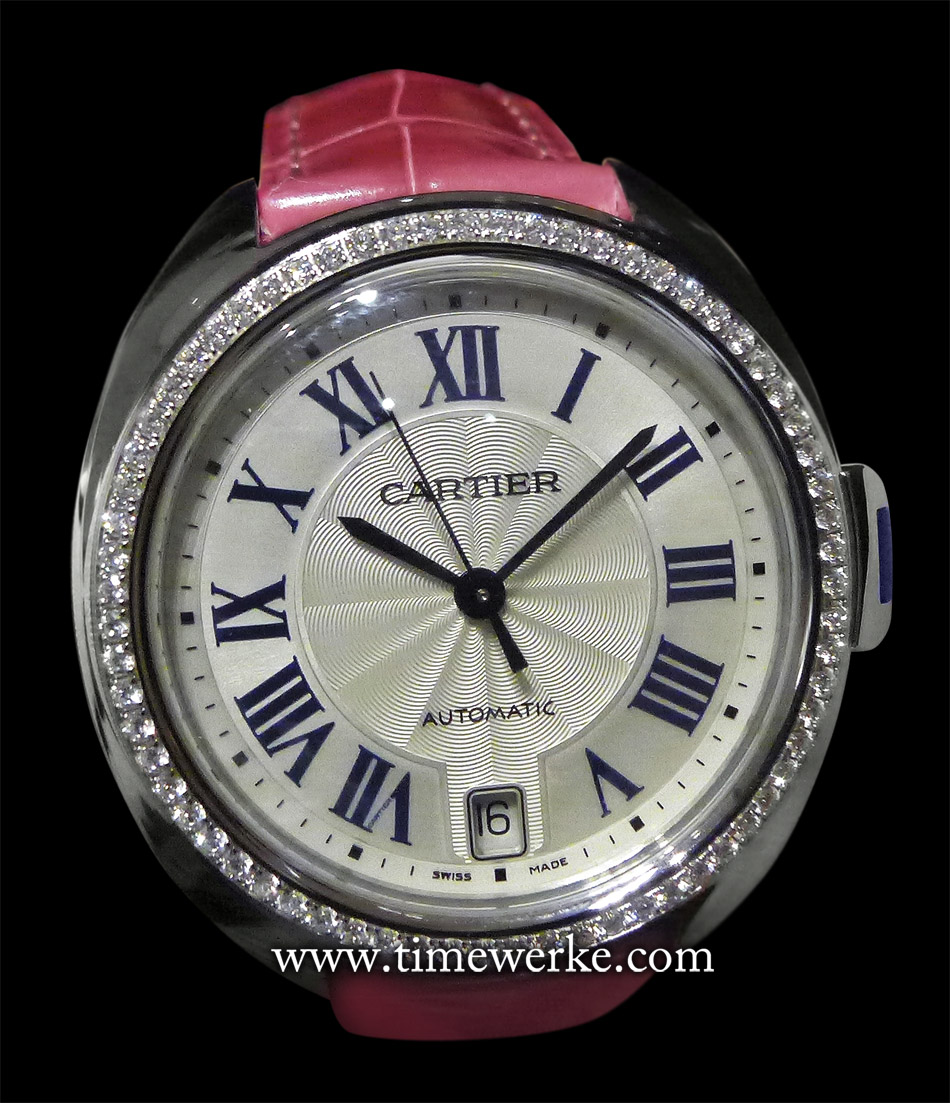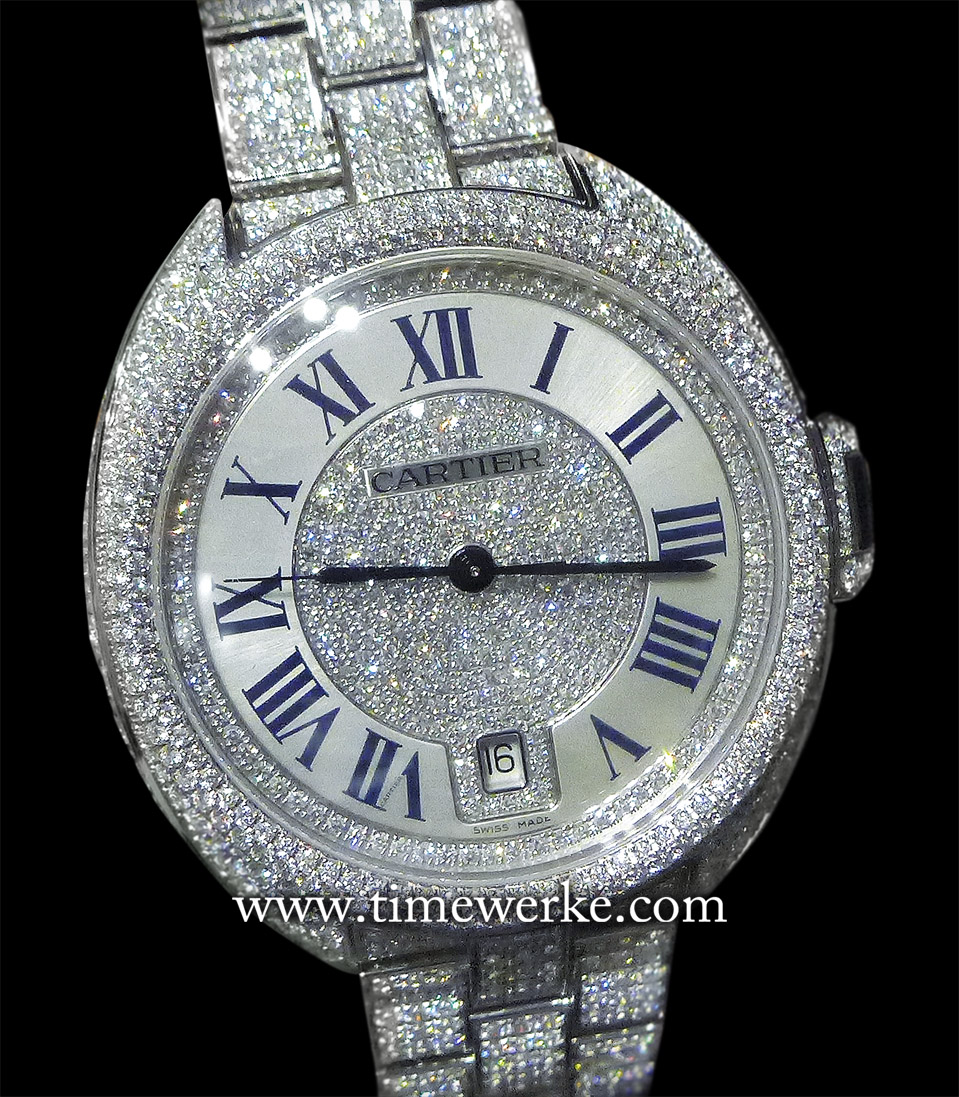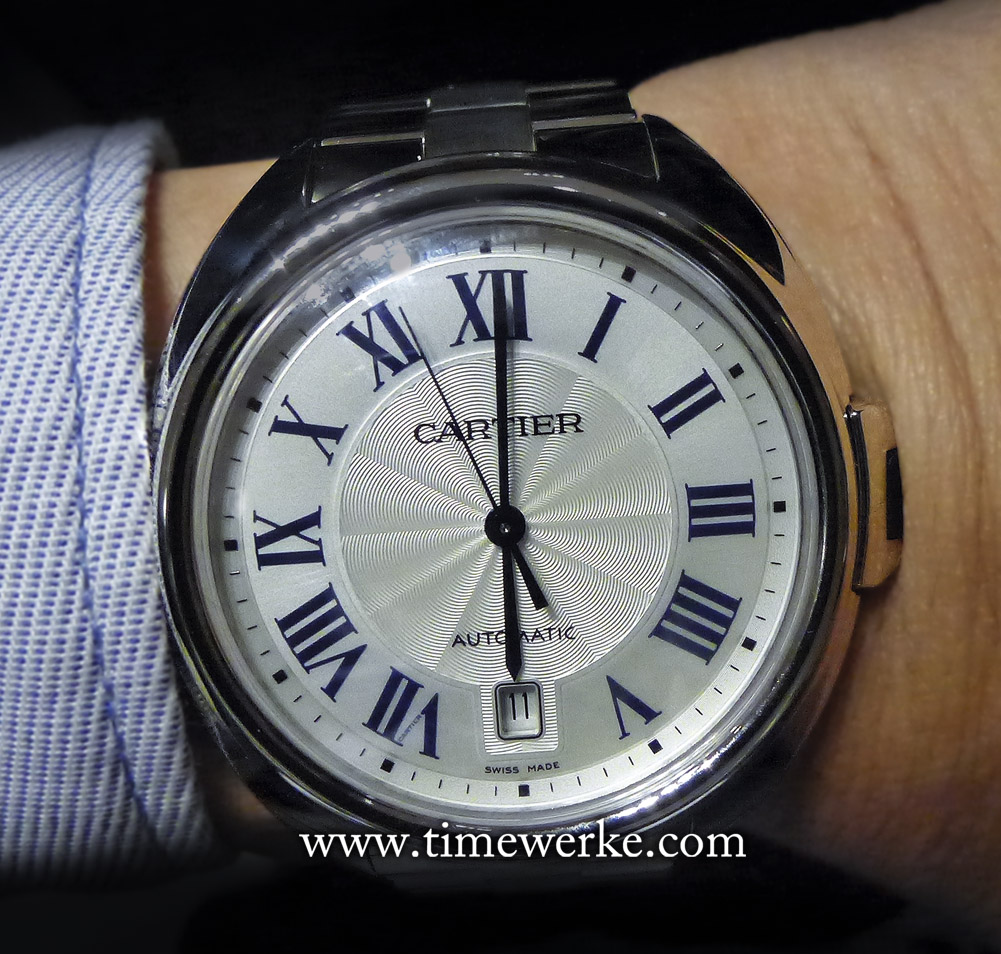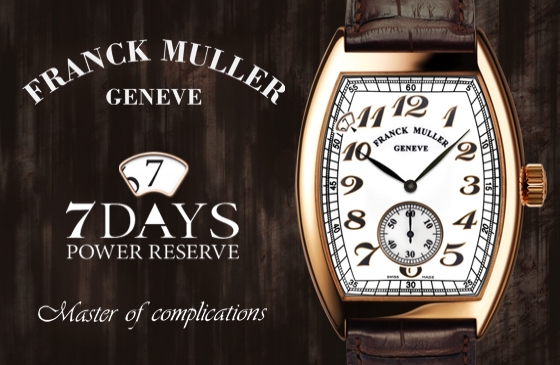
Clé de Cartier, introduced in 2015. It features the Calibre 1847 MC automatic movement housed in a 35mm diameter case in 18K white gold and is set with brilliant-cut diamonds. Photo: © TANG Portfolio. 2015 Salon International de la Haute Horlogerie.
There is no doubting that Cartier’s timepieces have a strong identity. While many can strongly associate the brand with its dial designs featuring Roman numerals, the sole use of this numeric system for the brand’s identity simply isn’t the case, literally.
The watchcase is another key factor that has clearly defined Cartier’s timepieces. The brand has a legacy and well-known track record for it. Examples include the Santos, Tank and in more recent times, the Ballon Bleu de Cartier timepieces.
The famed Santos wristwatch for example, was said to have been first designed in 1904 by Louis Cartier (1875 to 1942) himself for his good friend, the pioneer aviator Alberto Santos-Dumont (1873 to 1932).
Then there is the legendary Cartier Tank watch, first said to have been created in 1917. However, it was only officially launched and marketed in 1919.
The Ballon Bleu de Cartier was launched in 2007 and in less than a decade, has already become highly identifiable with the brand.

Clé de Cartier, introduced in 2015. This fully-paved piece features the Calibre 1847 MC automatic movement housed in a 35mm diameter case in 18K white gold set with brilliant-cut diamonds. Photo: © TANG Portfolio. 2015 Salon International de la Haute Horlogerie.
In 2015, the Maison introduced a new case design for a collection known as Clé de Cartier where its shape is inspired by the pure lines in architecture.
The French word clé means “key” when translated to English. In addition to the shape of the case, the other strong feature is the crown with the sapphire, which is described as “jewel-like” and “key-like” by the brand.
The crown was designed to resemble a key, hence the use of the French word clé. In short, the crown is the key (pun intended) design feature.
The new Clé de Cartier collection includes both gents and ladies timepieces. For the gentlemen, the case of the Clé de Cartier is 40mm while that for ladies is smaller, at either 35mm or 31mm.

For gentlemen, there is the larger 40mm diameter Clé de Cartier in 18K white gold which is also powered by the Calibre 1847 MC automatic movement. Photo: © TANG Portfolio. 2015 Salon International de la Haute Horlogerie.
The use of the key-like crown design is actually “cle-ver” as the brand has also highlighted that watches of the past were once wound and set by the use of keys. That is why many vintage timepieces are described as “key-winding”.
Moreover, the initial Clé de Cartier collection launched at the 2015 Salon International de la Haute Horlogerie in Geneva features the in-house Manufacture Calibre 1847 MC automatic movement.
Naming the movement the Calibre 1847 is very apt as that was the year the then 28-year old Louis François Cartier (1819 to 1904) first established his business in Paris.


